Let me tell you, if you’re battling hard water, a Kinetico water softener is a game-changer. I’ve lived with crusty faucets and dry skin long enough to know the struggle, and Kinetico’s innovative, non-electric system delivers silky water that transforms your home.
From protecting your appliances to making your showers feel spa-like, this is an investment that pays off. In this article, I’ll share my experience, break down the pros and cons, compare it to other brands, and give you maintenance tips to keep it running smoothly.
Trust me, you’ll want one.
My Experience With The Kinetico Water Softener
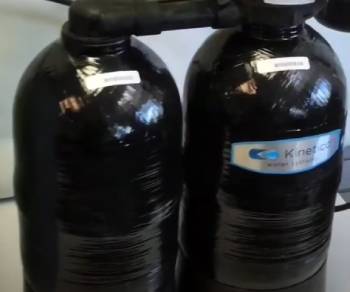
I’ll never forget the day I decided to get a Kinetico water softener.
My family and I had just moved into a new home in an area notorious for hard water.
The telltale signs were everywhere: limescale buildup on my shiny new faucets, stiff laundry, and my skin feeling like it had been scrubbed with sandpaper after every shower.
I’d heard about water softeners before, but I wasn’t sure they were worth the hype. After some research, I settled on Kinetico’s Premier Series, and let me tell you, it’s been a revelation.
From the moment it was installed, I noticed a difference. The water felt softer, almost silky, when I washed my hands. My morning showers became something I looked forward to, not just a necessity. My hair, which used to feel like straw, was suddenly softer and shinier.
Even my teenage daughter, who showers twice a day, commented on how her skin wasn’t as dry anymore. The Kinetico system’s twin-tank design meant we never ran out of soft water, even during peak usage times like laundry day or when we had guests over.
What really blew me away was how it impacted my home. My dishwasher and washing machine seemed to work better, and I didn’t have to scrub limescale off my appliances anymore. I also noticed I was using less detergent and shampoo—about half as much as before.
The system runs on the kinetic energy of moving water, so I didn’t have to worry about plugging it in or dealing with power outages. Installation was a breeze, too; the technician came to my home, tested the water, and set everything up in a few hours.
Sure, it wasn’t cheap, but the difference it made was undeniable. I felt like I’d upgraded my entire home’s water system to first class.
Pros of The Kinetico Water Softener
- Non-Electric Operation
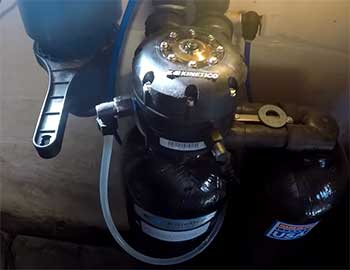
One of the things I love most about my Kinetico system is that it doesn’t need electricity to run.
It uses the kinetic energy of flowing water to power itself, which is both eco-friendly and practical.
I live in an area prone to power outages, and knowing my softener will keep working no matter what gives me peace of mind.
Plus, there are no electrical components to worry about repairing or replacing, which cuts down on maintenance headaches. It’s a clever design that makes you wonder why all water softeners aren’t built this way.
- Twin-Tank Design for Continuous Soft Water
The twin-tank system is a standout feature. Unlike single-tank softeners that leave you with hard water during regeneration cycles, Kinetico’s dual tanks ensure you always have soft water on tap. I’ve never experienced a moment where the water felt hard, even when the system was regenerating.
This is a huge plus for larger households or homes with high water usage. Whether I’m running the dishwasher, doing laundry, or taking a shower, the soft water keeps flowing. It’s like having a luxury water supply 24/7.
- High Efficiency and Low Salt Usage
Kinetico claims their systems use up to 70% less salt than other brands, and I believe it. I only need to add a 40-pound bag of salt every eight weeks or so, which is a lot less frequent than I expected. This efficiency doesn’t just save money on salt; it also means less water is used during regeneration cycles.
For someone like me who tries to be mindful of environmental impact, this is a big win. The system’s demand-initiated regeneration only kicks in when needed, so you’re not wasting resources on unnecessary cycles.
- Durability and Longevity
Kinetico softeners are built to last. I’ve read reviews from users who’ve had their systems for 20 years or more, and mine still feels brand new after a couple of years. The non-electric design reduces wear and tear, and the high-quality materials give me confidence it’ll keep going strong.
Kinetico offers a 5-plus-5 warranty (five years from the manufacturer and five from the dealer), which is better than many competitors. Knowing I’m covered for a decade makes the investment feel even more secure.
- Certified Quality and Performance
Kinetico’s systems are certified by the Water Quality Association (WQA) and meet industry standards for performance and efficiency. This isn’t just marketing fluff—I can feel the difference in the water quality.
The ion-exchange resin beads effectively remove calcium and magnesium, leaving my water consistently soft. Plus, the certifications give me confidence that the system has been rigorously tested. It’s reassuring to know I’m using a product that’s been vetted by experts.
Not-So-Good Parts of The Kinetico Water Softener
- High Upfront Cost
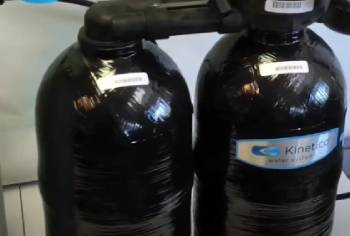
Let’s be real: Kinetico water softeners aren’t cheap.
My Premier Series system, including installation, set me back around $4,000.
I’ve heard prices can range from $500 to $5,000 depending on the model and your home’s needs, but it’s definitely a premium product.
For some, this upfront cost might be a barrier, especially when you can find basic softeners at big-box stores for under $1,000. I justified it by thinking about the long-term savings on appliance repairs and reduced detergent use, but it’s still a significant investment.
- Lack of Price Transparency
One thing that frustrated me was Kinetico’s lack of upfront pricing. You can’t just go to their website and see a price list. Instead, you have to schedule an in-home consultation with a dealer to get a quote.
While the consultation was helpful (they tested my water and tailored the system to my needs), I would’ve preferred to know the ballpark cost upfront. It felt a bit like walking into a car dealership without knowing what you’re getting into, which can be intimidating for first-time buyers.
- Proprietary Parts and Dealer Dependency
Here’s where things get a bit tricky. Kinetico systems use proprietary parts, which means you can only get replacements from Kinetico dealers. I once needed a new pre-filter, and it cost me more than I expected—about three times the price of a generic filter.
Plus, if you try to install parts yourself, you risk voiding the warranty. This dealer dependency can be a hassle, especially if your local dealer isn’t responsive. I’ve been lucky with my dealer, but I’ve read horror stories about others being stuck with poor service.
- Occasional Iron and Taste Issues
While my system works great most of the time, I’ve noticed a slight metallic taste in the water occasionally, especially after regeneration cycles. Some users report high iron levels or a salty taste, which might be due to the integrated iron filter not always working perfectly.
In my case, it’s been minor and rare, but it’s worth mentioning. If you have high iron content in your water, you might need an additional filter, which adds to the cost. It’s not a dealbreaker, but it’s something to keep in mind.
Maintenance Tips For Your Kinetico Water Softener
- Regularly Check and Refill Salt
Keeping your Kinetico system running smoothly starts with the salt. I check my brine tank every couple of weeks to make sure it’s got enough evaporated salt (Kinetico recommends pellets, cubes, or blocks). I usually add a 40-pound bag every eight weeks, but this depends on your water usage and hardness.
Don’t let the tank get too low—below halfway is my cue to refill. Using the right type of salt is key; avoid rock salt, as it can clog the system. It’s a simple task that takes five minutes but keeps everything humming.
- Monitor Regeneration Frequency
Kinetico’s demand-initiated regeneration is a lifesaver, but it’s smart to keep an eye on how often your system regenerates. Mine typically regenerates every 10 days or so, depending on our water usage (about 1,500–1,800 gallons).
If you notice it regenerating too often (like every few days), it could mean your system isn’t sized correctly for your household. Conversely, if it’s going months without regenerating, you might need to check the resin bed. I learned from a technician that regenerating at least every 14 days helps protect the resin, so don’t ignore this.
- Clean the Brine Tank Annually
Once a year, I give the brine tank a good cleaning to prevent salt buildup or sludge. It’s not glamorous, but it’s straightforward. I turn off the water supply, scoop out any remaining salt, and wipe down the tank with a mild detergent and water.
Be sure to rinse thoroughly to avoid any soap residue messing with the system. This keeps the brine solution clean and ensures the resin beads regenerate properly. It takes about 30 minutes, and I usually do it on a quiet weekend.
- Schedule Professional Maintenance
While Kinetico systems are low-maintenance, I recommend having a professional check your system every couple of years. My dealer offers a maintenance plan, and I’ve found it worth the cost for peace of mind. They check the resin bed, valves, and filters to make sure everything’s in top shape.
If you’re not on a plan, call your dealer if you notice anything off, like a salty taste or reduced water pressure. Don’t try to fix major issues yourself—it’s easy to void the warranty.
- Test Your Water Periodically
Even with a great system like Kinetico, it’s smart to test your water hardness every year or so. I got a free water test kit from my dealer, but you can also buy one online for about $10.
Testing helps you confirm the system is working as it should and lets you adjust settings if your water hardness changes (like if your city switches wells). It’s a quick way to catch any issues early and keep your water silky smooth.
Comparison of Kinetico Water Softener With Other Brands
Let’s talk about how Kinetico holds up against other water softener brands: Marlo, Aquasure, RainSoft, and Morton. I’ve chatted with friends, read up on user experiences, and compared my Kinetico system to give you a clear picture, like we’re sitting down with a cup of coffee to hash it out.
- Kinetico Vs. Marlo Water Softener
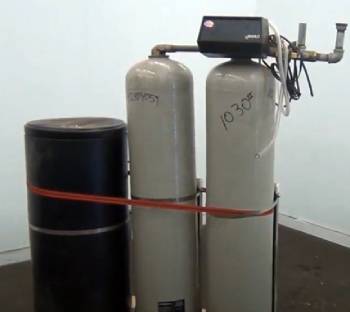
Marlo water softeners are known for their commercial-grade quality, often used in businesses but available for homes too.
A friend who runs a small hotel swears by Marlo’s durability, saying their systems handle high water volumes like champs.
Marlo offers single-tank and twin-tank models, but most rely on electricity, unlike Kinetico’s non-electric design.
Marlo’s systems are customizable, but I found their residential models less intuitive to maintain than Kinetico’s.
Price-wise, Marlo can be comparable—around $3,000–$4,000—but their electric systems might hike your utility bill. Kinetico’s twin-tank, non-electric setup gives it an edge for continuous soft water and lower operating costs in my busy household.
- Kinetico Vs. Aquasure Water Softener
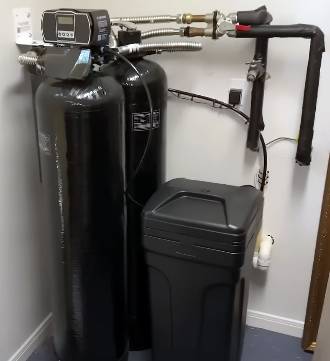
Aquasure’s Harmony Series is a popular choice for budget-conscious buyers, with prices starting around $700–$1,500.
A neighbor with an Aquasure system likes its digital controls and compact design, perfect for his small home.
However, it’s a single-tank system, so you might get hard water during regeneration, which I’d find annoying during laundry day.
Aquasure’s systems use electricity and regenerate on a timer, which can waste salt if your water usage fluctuates.
Kinetico’s demand-initiated regeneration and twin-tank design make it more efficient and reliable for larger families like mine, though Aquasure’s lower upfront cost is tempting for smaller households.
- Kinetico Vs. RainSoft Water Softener
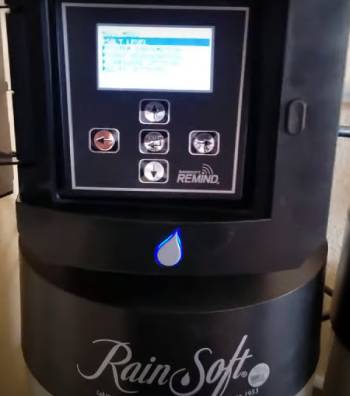
RainSoft is another premium brand, often compared to Kinetico for its high-end features.
A colleague with a RainSoft EC5 loves its Wi-Fi-enabled controls, which let her monitor the system from her phone.
RainSoft’s systems are also WQA-certified, like Kinetico’s, but they require electricity and often come with pricier maintenance contracts.
\RainSoft’s costs can range from $3,500 to $6,000, sometimes more than Kinetico.
I prefer Kinetico’s non-electric operation and lower salt usage, as it keeps my maintenance simple and costs down.
RainSoft’s tech-heavy approach is great if you love gadgets, but I’d rather not rely on power or apps.
- Kinetico Vs. Morton Water Softener
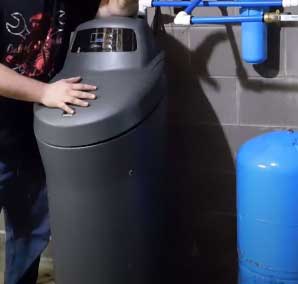
Morton water softeners are the budget-friendly option, available at big-box stores for $500–$1,000.
A friend with a Morton system says it gets the job done for his small condo, but he refills salt more often than I do with Kinetico.
Morton’s single-tank, timer-based systems can’t match Kinetico’s twin-tank design for continuous soft water.
They’re also less durable, with warranties typically around 5–7 years compared to Kinetico’s 10-year coverage.
For a family of five like mine, Morton feels underpowered, but it’s a solid pick if you’re on a tight budget and don’t mind occasional hard water.
Kinetico stands out for its non-electric, twin-tank design and efficiency, making it ideal for busy households. Marlo’s great for heavy-duty needs, Aquasure and Morton suit smaller budgets, and RainSoft appeals to tech lovers.
But for reliability and low maintenance, Kinetico’s my pick.
Frequently Asked Questions (FAQ)
It depends on your needs, but Kinetico is a top contender. Its non-electric, twin-tank design ensures continuous soft water and high efficiency, which I love. It’s certified by the WQA and NSF, and users rave about its durability. However, brands like RainSoft offer smart technology, and Morton’s budget-friendly. Compare features to find what fits your home best.
Kinetico’s parent company, Kinetico Incorporated, has an A+ rating with the Better Business Bureau (BBB). Individual dealers may vary, so check your local dealer’s rating. My experience with my dealer was great—responsive and professional—but some users report mixed experiences depending on the region.
Kinetico water softeners are built to last, often exceeding 20 years with proper maintenance. The non-electric design reduces wear, and the high-quality resin can last 15–20 years. I’ve heard from users who’ve had theirs for decades without major issues, and the 10-year warranty adds extra confidence.
Kinetico water softeners typically cost $500–$5,000, including installation. My Premier Series system was around $4,000, but prices vary based on model, home size, and dealer. Additional features like reverse osmosis can push costs higher. Contact a local dealer for a customized quote, as Kinetico doesn’t list prices online.
Conclusion: Why Kinetico Is Worth It?
If you’re tired of hard water wreaking havoc on your home, a Kinetico water softener is a smart choice. It’s transformed my daily life with softer skin, cleaner appliances, and less limescale. Despite the higher cost, the efficiency, durability, and non-electric design make it a worthwhile investment.
With proper maintenance, it’ll serve you for decades. Trust me, once you experience the silky water, you’ll wonder why you didn’t get one sooner. Go for it—you won’t regret it.
